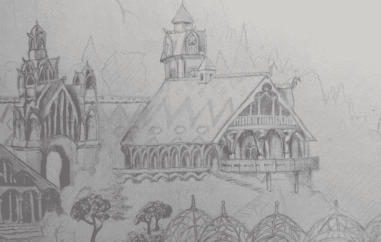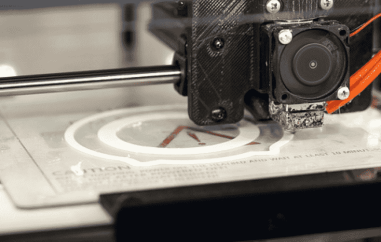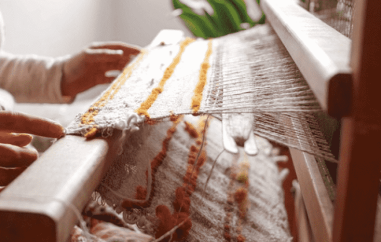Unlocking Your Inner Sketch Artist: A Guide to Mastery

Sketching is more than just an art form; it's a language, a way to communicate thoughts, emotions, and visions without uttering a single word. Whether you are an absolute beginner or someone looking to refine your skills, the journey to becoming a better sketch artist is filled with endless opportunities for growth and discovery. Here's your ultimate guide to elevating your sketch-art game, complete with practical tips, daily routines, inspirational artists, and the best materials to use.
The Journey Begins: Getting Started
1. Embrace the Basics
Every masterpiece begins with a single line. Start with simple shapes and practice drawing them from different angles. Focus on understanding proportions and perspective. Don't rush; patience is key. Remember, every great artist was once a beginner who didn't quit.
2. Invest in Quality Materials
While talent and practice are crucial, having the right tools can make a significant difference. Invest in a range of pencils, from hard (H) to soft (B) to cover light and dark shading. A good quality sketchbook with smooth, thick paper will handle your strokes and erasures better.
3. Daily Practice: The Path to Improvement
Consistency is the secret sauce to mastery. Dedicate at least 30 minutes a day to sketching. Begin with warm-up exercises like doodling or drawing simple patterns to loosen up your hand. Gradually move to more complex subjects. Document your progress; it's motivating to see how far you've come.
Mastering Techniques: From Novice to Pro
1. Shading and Textures
Understanding light and shadow is crucial in bringing your sketches to life. Practice shading techniques like hatching, cross-hatching, stippling, and blending. Experiment with creating different textures, whether it's the rough bark of a tree or the smooth surface of glass.
2. Study Anatomy and Proportions
If you're interested in drawing people or animals, studying anatomy is essential. Learn about the underlying structures that make up the human body or animal form. There are many online resources and books available to help with this.
3. Perspective and Composition
Mastering perspective will add depth and realism to your drawings. Practice drawing from different viewpoints, and learn to compose your sketches to lead the viewer's eye through your artwork.
Seeking Inspiration: Fuel for Creativity
1. Study Great Artists
Immerse yourself in the works of renowned sketch artists. Leonardo da Vinci is a timeless example, known for his meticulous studies and detailed sketches. Modern artists like Kim Jung Gi, renowned for his incredible memory and freehand drawing skills, can be a great source of inspiration.
2. Explore Art Communities
Join online platforms like DeviantArt, Behance, or Instagram where artists share their work. Engaging with these communities can provide constructive feedback, new ideas, and support from fellow artists.
3. Nature and Everyday Life
Sometimes the best inspiration comes from the world around you. Carry a sketchbook wherever you go and draw what you see--people in a cafe?, the hustle of a city street, or the tranquility of a park.
Tools of the Trade: What You Need
1. Pencils
- Graphite Pencils: Ranging from 4H (hard) to 8B (soft), they are essential for different shading techniques.
- Mechanical Pencils: Great for fine details.
- Charcoal Pencils: For rich, dark lines and bold contrasts.
2. Paper
- Sketchbooks: Choose one with acid-free, heavyweight paper to handle different mediums and erasing.
- Loose Sheets: For larger drawings or specific projects.
3. Erasers and Blending Tools
- Kneaded Erasers: Perfect for lifting graphite and creating highlights. - Blending Stumps: Essential for smooth shading transitions.
4. Additional Supplies
- Fixative Spray: To preserve your sketches and prevent smudging.
- Drawing Board: Provides a solid surface to draw on, especially for detailed work.
Building a Routine: Daily Habits for Success
1. Set Goals
Define what you want to achieve in your sketching practice. Whether it's mastering a particular technique or completing a series of themed sketches, clear goals will keep you focused.
2. Learn from Critiques
Seek feedback from peers or mentors. Constructive criticism can be incredibly valuable in identifying areas for improvement.
3. Stay Curious
Never stop learning. Watch tutorials, read art books, attend workshops, and experiment with new techniques and mediums.
4. Rest and Reflect
Take breaks to avoid burnout. Sometimes stepping away from your work and coming back with fresh eyes can lead to breakthroughs.
Inspirational Artists to Follow
- Leonardo da Vinci: His anatomical sketches are legendary and a testament to the power of observation and study.
- Kim Jung Gi: His freehand drawing videos are mesmerizing and showcase the importance of practice and memory.
- Andrew Loomis: His books on figure drawing are invaluable resources for any artist.
Becoming a better sketch artist is a journey of continuous learning and exploration. By practicing regularly, investing in good materials, seeking inspiration from the greats, and staying curious, you will see your skills flourish. Remember, every sketch is a step forward. Embrace the process, and enjoy the journey. Your masterpiece is just a sketch away.
Image by Isaac









































